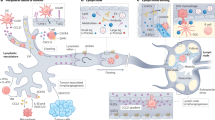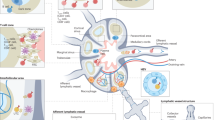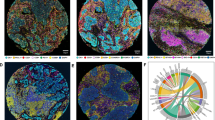Abstract
IN a previous paper1 it was reported that when three lymphocytic tumours, each with a different capacity to invade host tissues, were grown in Millipore Type AA filters (pore size 0.8 ± 0.05µ) (Millipore Filter Corporation, Bedford, Mass.) in double diffusion chambers, the cells of the tumours were unable to penetrate the filter after growing for 60 days in an isologous host. More recent experiments with this filter have shown that while the cells of these tumours are able to pass through the AA filter, there is nevertheless a striking difference in the capacity of the cells of an invasive and a non-invasive tumour to penetrate the pores of this membrane and establish a growing cell population on the other side.
This is a preview of subscription content, access via your institution
Access options
Subscribe to this journal
Receive 51 print issues and online access
$199.00 per year
only $3.90 per issue
Buy this article
- Purchase on Springer Link
- Instant access to full article PDF
Prices may be subject to local taxes which are calculated during checkout
Similar content being viewed by others
References
Shelton, E., and Rice, M. E., J. Nat. Cancer Inst., 21, 137 (1958).
Law, L. W. (personal communication).
Hauschka, T. S., Trans. N. Y. Acad., Sci., Ser. II, 16, 64 (1953).
Author information
Authors and Affiliations
Rights and permissions
About this article
Cite this article
SHELTON, E., RICE, M. Relation of Invasive Capacity to Passage of Lymphocytic Cells through Cellulose Membrane Filters. Nature 184, 479–480 (1959). https://doi.org/10.1038/184479a0
Issue Date:
DOI: https://doi.org/10.1038/184479a0
Comments
By submitting a comment you agree to abide by our Terms and Community Guidelines. If you find something abusive or that does not comply with our terms or guidelines please flag it as inappropriate.



